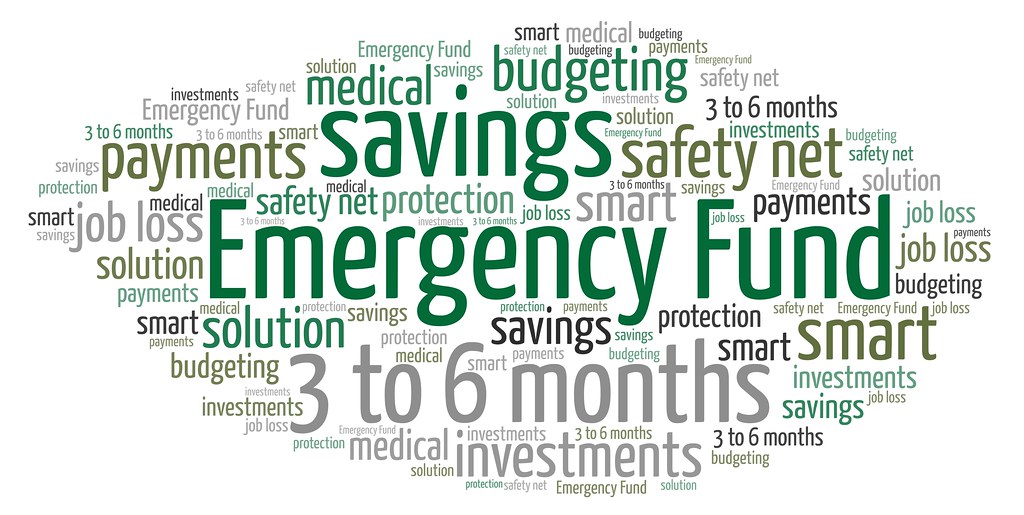In the unpredictable journey of life, financial stability is often a balancing act. One essential element of this equilibrium is the often-overlooked hero—the emergency fund. This blog explores the significance of having an emergency fund, provides insights on how to build and manage it effectively, and shares inspiring instances where having a financial safety net proved invaluable.
Why an Emergency Fund Matters:
An emergency fund is a financial safety net designed to cushion the impact of unexpected expenses or income disruptions. Its importance lies in the ability to weather unforeseen storms without jeopardizing your financial health. The consequences of not having an emergency fund can range from accumulating high-interest debt to compromising long-term financial goals.
Personal Anecdote: A Lesson Learned
To emphasize the gravity of the matter, let’s delve into a personal anecdote. Susan, a young professional, found herself facing a sudden medical expense. Without an emergency fund, she had to resort to borrowing, resulting in a ripple effect on her financial well-being. This real-life scenario underscores the critical role of an emergency fund.
Understanding the Basics:
What is an Emergency Fund?
An emergency fund is a designated pool of money set aside to cover unforeseen expenses or bridge income gaps during challenging times. Unlike regular savings accounts, emergency funds are not intended for planned expenses or financial goals.
Key Characteristics:
- Liquidity: Easily accessible without penalties or delays.
- Security: Kept in low-risk, interest-bearing accounts.
- Designated Purpose: Solely reserved for genuine emergencies.
Determining Your Ideal Emergency Fund:
How Much is Enough?
Establishing the right amount for your emergency fund is a crucial step. While specific circumstances vary, general guidelines and rules of thumb can provide a helpful starting point. Consider factors such as monthly expenses, job stability, and potential financial obligations.
Examples of Different Scenarios:
- Entry-Level Professional: Aim for three to six months’ worth of living expenses.
- Mid-Career Professional: Consider a buffer of six to nine months.
- High-Income or Variable Income: Aiming for a cushion of nine to twelve months may be prudent.
Building Your Emergency Fund:
Strategies for Success:
Building an emergency fund requires a systematic approach. Here are effective strategies to consider:
- Automated Transfers: Set up automatic transfers from your main account to your emergency fund.
- Budget Prioritization: Treat your emergency fund contribution as a non-negotiable expense.
- Regular Reviews: Periodically reassess your financial situation to adjust your emergency fund goals.
Overcoming Obstacles:
Staying motivated and overcoming obstacles are integral to the journey of building an emergency fund. Unexpected expenses, fluctuating income, or competing financial goals can pose challenges. It’s crucial to stay committed, adjust goals when necessary, and celebrate milestones along the way.
Where to Keep Your Emergency Fund:
Choosing the Right Home:
Deciding where to park your emergency fund is a decision not to be taken lightly. Factors such as accessibility, interest rates, and liquidity play a significant role.
- Financial Institution: Choose a reputable institution that aligns with your financial goals.
- Account Type: Consider high-yield savings accounts or money market accounts for optimal returns.
- Accessibility: Ensure easy access to your funds in times of need.
Using Your Emergency Fund Wisely:
Recognizing a Financial Emergency:
Distinguishing between a genuine financial emergency and a non-urgent expense is paramount. Medical emergencies, unexpected job loss, or essential home repairs are examples that warrant tapping into your emergency fund.
Strategies for Utilization:
- Prioritize Needs: Allocate funds to critical needs like housing, utilities, and healthcare.
- Avoiding High-Interest Debt: Using your emergency fund prevents reliance on credit cards or loans with high interest rates.
Replenishing After Use:
After tapping into your emergency fund, the focus should shift to replenishment. Implement a plan to rebuild the fund, ensuring its readiness for future unforeseen events.
Additional Tips and Resources:
Myths and Tools:
- Common Myths: Debunking misconceptions about emergency funds to provide clarity.
- Management Tools: Explore apps and tools designed to streamline emergency fund management.
Inspirational Stories:
Highlighting real-life stories where individuals successfully navigated financial challenges with the help of their emergency funds.
Conclusion:
In summary, an emergency fund is not just a financial buffer; it’s a lifeline during unpredictable times. As we conclude this exploration, remember that the journey toward financial security starts with a single step. Take action today, build your emergency fund, and ensure a more resilient and stable financial future.

